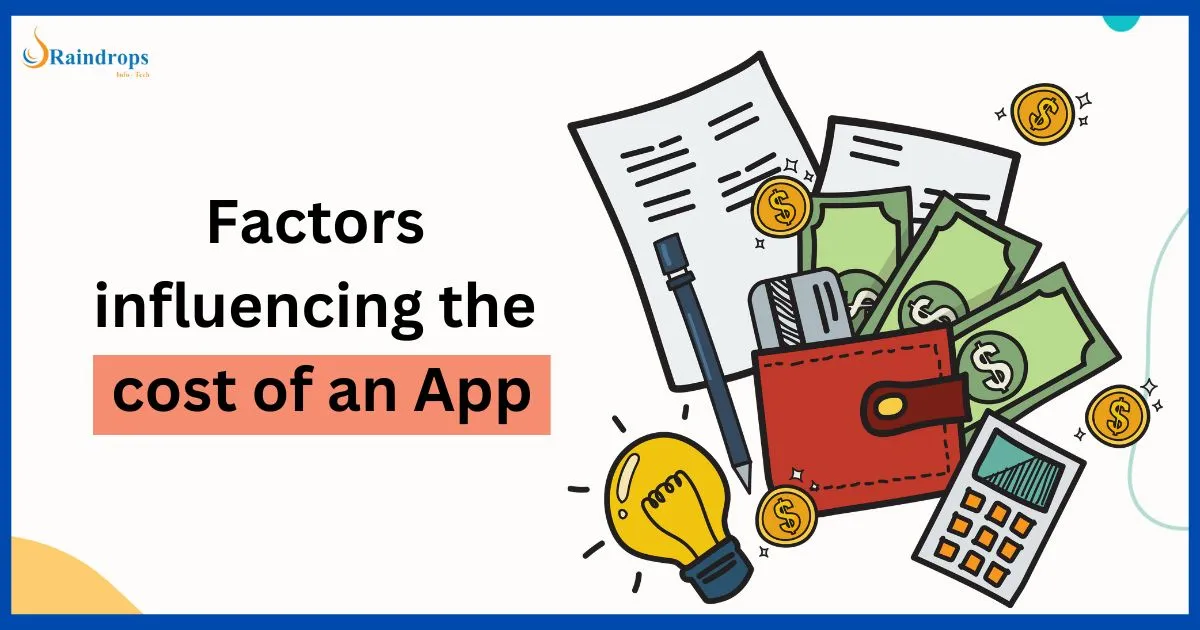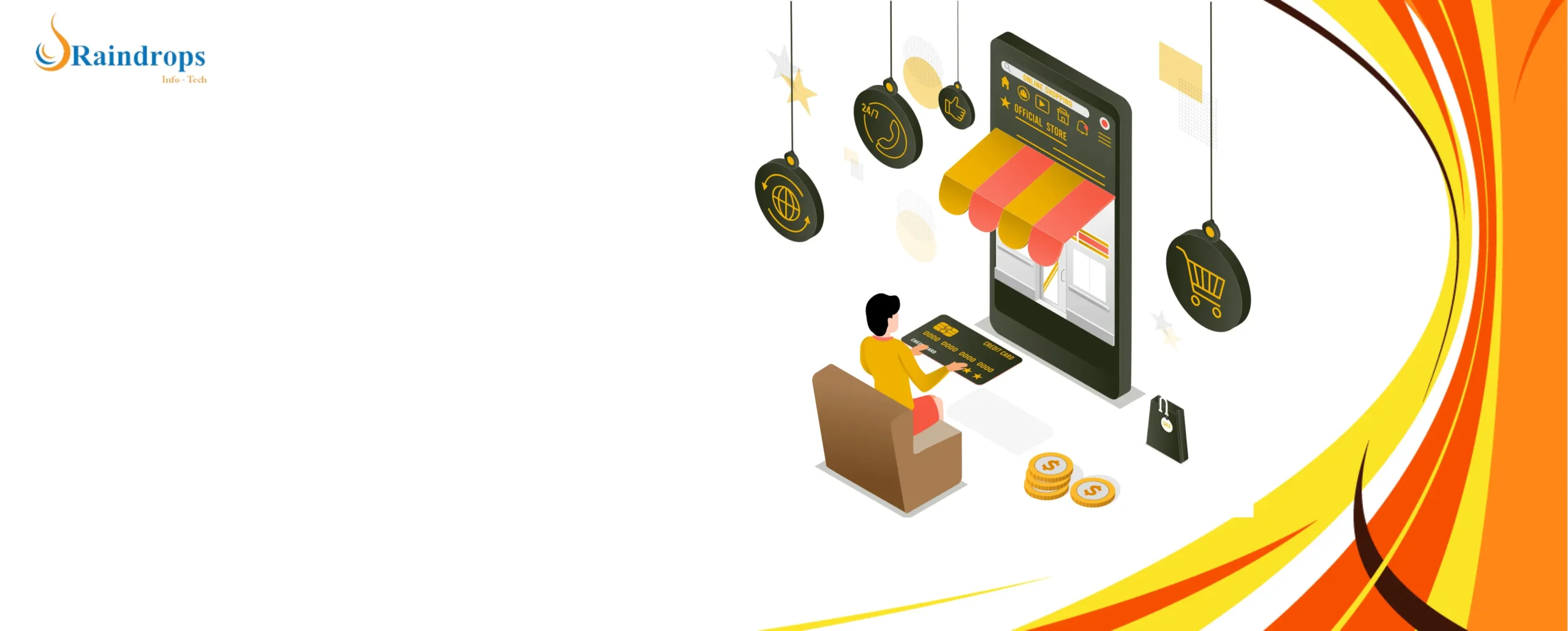Introduction
Importance of Ecommerce Apps
Ecommerce apps are vital in today’s digital world. They allow businesses to reach more customers, making shopping easy and convenient for users. With an ecommerce app, customers can browse products, make purchases, and track orders from their mobile devices, which can significantly boost sales and customer satisfaction. Businesses that have a strong mobile presence can stay competitive and meet the demands of modern consumers who prefer shopping online.
Factors Influencing Cost
The cost of building an ecommerce app can vary widely depending on several factors:
- App Complexity: The more features and functionalities you want in your app, the higher the cost. A simple app with basic features like product listings and a shopping cart will cost less than an advanced app with features like augmented reality and AI recommendations.
- Platform Choice: Developing an app for a single platform (either iOS or Android) is cheaper than creating a cross-platform app that works on both.
- Design and User Experience: Custom designs tailored to your brand can be more expensive than using pre-made templates, but they can also provide a better user experience.
- Backend Development: Setting up databases, servers, and APIs can add to the cost, especially if your app needs to handle a lot of data or integrate with third-party services.
- Development Team: Hiring an in-house team can be costlier than outsourcing the project to a development agency or freelancers. The size and expertise of the team also matter.
- Testing and Quality Assurance: Ensuring your app is bug-free and runs smoothly across different devices requires thorough testing, which can increase costs.
- Maintenance and Support: After the app is launched, ongoing maintenance and support are necessary to keep it running smoothly and to add new features, which incurs additional costs.
Market Overview
Current Trends in Ecommerce
Ecommerce has seen rapid growth in recent years, driven by advancements in technology and changing consumer behavior. Some key trends include:
- Mobile Shopping: More people are using their smartphones to shop online. Mobile commerce, or m-commerce, is becoming a dominant force in the ecommerce industry.
- Social Commerce: Social media platforms like Instagram and Facebook are integrating shopping features, allowing users to buy products directly through these apps.
- Personalization: Businesses are using data analytics to provide personalized shopping experiences, tailoring recommendations and offers to individual customers.
- Subscription Services: Subscription-based models are gaining popularity, offering customers convenience and businesses a steady revenue stream.
- Sustainable Shopping: There is a growing demand for eco-friendly and sustainable products, with consumers increasingly considering the environmental impact of their purchases.
Demand for Mobile Ecommerce Apps
The demand for mobile ecommerce apps is higher than ever. With the convenience of shopping on the go, customers prefer using apps over traditional websites. Key reasons for this demand include:
- Convenience: Mobile apps offer a seamless shopping experience, allowing users to browse, buy, and track orders from anywhere.
- Speed and Performance: Apps generally load faster and provide a smoother experience compared to mobile websites.
- Exclusive Features: Many ecommerce apps offer app-only deals, personalized recommendations, and loyalty programs to attract and retain users.
- Push Notifications: Apps can send push notifications to inform users about sales, new arrivals, and order updates, helping to drive engagement and sales.
- Offline Access: Some apps provide limited functionality even without an internet connection, such as browsing previously viewed items or saved carts.
If you are looking for app dev builders, Choosing Raindrops Infotech for your ecommerce app development needs is a smart decision because they offer a blend of expertise, innovation, and customer-centric solutions. With a proven track record in delivering high-quality, customized ecommerce applications, Raindrops Infotech leverages the latest technologies to create apps that are not only functional but also scalable and user-friendly. Their team of skilled developers, designers, and project managers work closely with clients to understand their unique business requirements, ensuring that each project is tailored to meet specific goals. Additionally, Raindrops Infotech is known for its transparent communication, timely delivery, and ongoing support, making them a reliable partner for businesses looking to enhance their online presence and drive growth through cutting-edge ecommerce solutions.
Key Factors Influencing Cost

App Complexity
The complexity of your ecom
merce app greatly affects its cost. Here are three levels of complexity:
- Basic Ecommerce App: A basic app includes essential features like user registration, product listings, a shopping cart, and checkout process. It provides the core functionality needed to start selling online but lacks advanced features and customizations.
- Medium Complexity App: A medium complexity app includes everything in a basic app plus additional features like user reviews, multiple payment options, product filters, and basic analytics. It offers a better user experience and more tools for managing the store.
- Advanced Ecommerce App: An advanced app includes all the features of a medium complexity app plus high-end functionalities like augmented reality for trying products, AI-based product recommendations, chatbots for customer support, and complex data analytics. It provides a highly personalized and interactive shopping experience.
Platform Choice
The choice of platform also impacts the cost of development:
- iOS vs. Android : Developing an app for either iOS or Android alone is less expensive than developing for both. Each platform has its own design and technical requirements, so developing for both increases the overall cost.
- Cross-Platform Development : Cross-platform development allows your app to run on both iOS and Android using a single codebase. While this can save time and money compared to developing separate apps for each platform, it might not fully leverage the unique features of each platform.
Design and User Experience
The design and user experience (UI/UX) are crucial for attracting and retaining customers:
- UI/UX Design : Investing in good UI/UX design ensures that your app is visually appealing and easy to use. This includes everything from the layout and navigation to the colors and fonts used in the app.
- Custom vs. Template Designs : Custom designs are tailored to your brand and provide a unique look and feel but are more expensive. Template designs are pre-made and more affordable, but they might not offer the same level of customization or uniqueness.
Features and Functionalities
The features and functionalities of your app determine its overall value to users and influence the cost:
- Essential Features : hese are the basic features every ecommerce app needs, such as user authentication (sign-up/sign-in), product listings with descriptions and images, a shopping cart, and a checkout process.
- Advanced Features : These include more sophisticated functionalities like augmented reality to let users try products virtually, AI-based recommendations to suggest products based on user behavior, and chatbots for instant customer support.
Backend Development
Backend development involves setting up the infrastructure that supports your app:
- Database and Server Costs : Databases store all your product, user, and order information. Servers handle the traffic and ensure the app runs smoothly. The cost depends on the size and complexity of your database and server needs.
- API Integrations : APIs (Application Programming Interfaces) allow your app to interact with other services like payment gateways, shipping providers, and third-party analytics tools. Integrating these can add to the cost.
Development Team
The cost of your development team depends on several factors:
- In-House vs. Outsourcing : Hiring an in-house team gives you more control but is often more expensive due to salaries, benefits, and other overhead costs. Outsourcing to a development agency or freelancers can be more cost-effective but requires careful management to ensure quality.
- Team Composition : A typical development team includes developers, designers, and project managers. The size and expertise of the team can influence the overall cost. More complex projects might also require additional roles like QA testers and business analysts.
Testing and Quality Assurance
Ensuring your app is free of bugs and runs smoothly is essential:
- Automated vs. Manual Testing : Automated testing uses software tools to run tests quickly and repeatedly, while manual testing involves human testers. Automated testing can save time and costs in the long run but requires an initial investment in tools and setup.
- Bug Fixes and Updates : After launching the app, ongoing testing is needed to fix any bugs that arise and to keep the app updated with the latest features and security patches.
Maintenance and Support
Post-launch support is crucial for the long-term success of your app:
- Ongoing Maintenance : Regular maintenance ensures that your app continues to function well. This includes updating the app to stay compatible with new versions of operating systems and fixing any issues that arise.
- Customer Support : Providing customer support helps resolve user issues and improve their experience. This can include in-app support features, live chat, or a dedicated support team.
Cost Estimates Based on Different Scenarios
Small Business / Startup
When you are a small business or a startup, you typically focus on building a basic ecommerce app that has essential features to get your business online quickly and cost-effectively.
- Basic Features
– User Authentication: Allows users to sign up and log in.
– Product Listings: Displays your products with images, descriptions, and prices.
– Shopping Cart: Lets users add items to a cart for purchase.
– Checkout Process: Facilitates payment and order confirmation.
– Order Tracking: Users can see the status of their orders. - Estimated Cost Range- For a basic ecommerce app with the features mentioned above, the cost can range from $10,000 to $30,000. This estimate includes design, development, and initial testing. The actual cost will depend on the specifics of your project and the rates of the developers you hire.
Medium-Sized Business
Medium-sized businesses often require more complex features to cater to a larger customer base and to provide a better user experience.
- Medium Complexity Features– User Reviews: Allows customers to leave feedback on products.
– Multiple Payment Options: Supports various payment methods like credit cards, PayPal, and others.
– Product Filters and Search: Helps users find products easily using filters like price, category, and ratings.
– Basic Analytics: Provides insights into sales performance, customer behavior, and other metrics.
– Wishlist: Allows users to save products for future purchases. - Estimated Cost Range- For a medium complexity ecommerce app, the cost can range from $30,000 to $70,000. This includes the addition of more advanced features, more detailed design work, and extensive testing to ensure a smooth user experience.
Large Enterprise
Large enterprises often need advanced features to handle high traffic volumes, provide personalized experiences, and integrate with various business systems.
- Advanced Features
– Augmented Reality: Lets users virtually try products, like seeing how furniture looks in their home.
– AI-Based Recommendations: Provides personalized product suggestions based on user behavior and preferences.
– Chatbots for Customer Support: Offers instant assistance to users through automated chatbots.
– Complex Data Analytics: Offers detailed reports and insights on user behavior, sales trends, and more.
– ntegration with ERP/CRM Systems: Connects with enterprise resource planning and customer relationship management systems for seamless business operations. - Estimated Cost Range- For an advanced ecommerce app with high-end features, the cost can range from $70,000 to $200,000 or more. This includes sophisticated development, extensive testing, and ongoing maintenance and support to handle a large user base and complex requirements.These estimates provide a general idea of the costs involved based on different business needs and app complexities. The actual cost will vary based on specific project requirements, developer rates, and other factors.
Conclusion
Summary of Key Points
Building an ecommerce app involves several key factors that influence the cost, including the app’s complexity, the platform you choose, design and user experience, features and functionalities, backend development, the development team, testing and quality assurance, and ongoing maintenance and support. Understanding these factors helps you better plan and budget for your app development project.
Final Thoughts on Budgeting for Ecommerce App Development
Budgeting for an ecommerce app can seem challenging, but breaking it down into manageable parts makes it easier. Start by identifying the essential features you need and prioritize them. Decide whether you want to develop for iOS, Android, or both. Consider the trade-offs between custom designs and using templates. Think about whether to hire an in-house team or outsource the project. Remember to factor in costs for testing, maintenance, and customer support after the app is launched. By carefully planning and making informed decisions, you can create a successful ecommerce app within your budget.
Future Trends in Ecommerce App Development and Their Potential Cost Impact
The ecommerce landscape is constantly evolving, and staying ahead of trends can give your app a competitive edge. Here are some future trends to watch for:
- Voice Commerce: With the rise of voice assistants like Alexa and Google Assistant, voice-activated shopping is becoming more popular. Adding voice commerce capabilities to your app can increase costs but offers a convenient shopping experience for users.
- Artificial Intelligence (AI): AI can provide personalized shopping experiences, improve customer service with chatbots, and offer predictive analytics. Implementing AI features can be costly but can significantly enhance user engagement and satisfaction.
- Augmented Reality (AR): AR allows users to try products virtually, such as seeing how furniture looks in their home or trying on clothes. This advanced feature can increase development costs but offers a unique and immersive shopping experience.
- Blockchain Technology: Blockchain can enhance security and transparency in transactions. While integrating blockchain can be complex and costly, it can build trust with your customers and provide a secure payment system.
- Progressive Web Apps (PWAs): PWAs combine the best of web and mobile apps, offering fast loading times, offline access, and a seamless user experience. Developing a PWA can be a cost-effective alternative to traditional mobile apps.
By keeping an eye on these trends and planning for their potential cost impact, you can ensure your ecommerce app remains relevant and competitive in the future.













